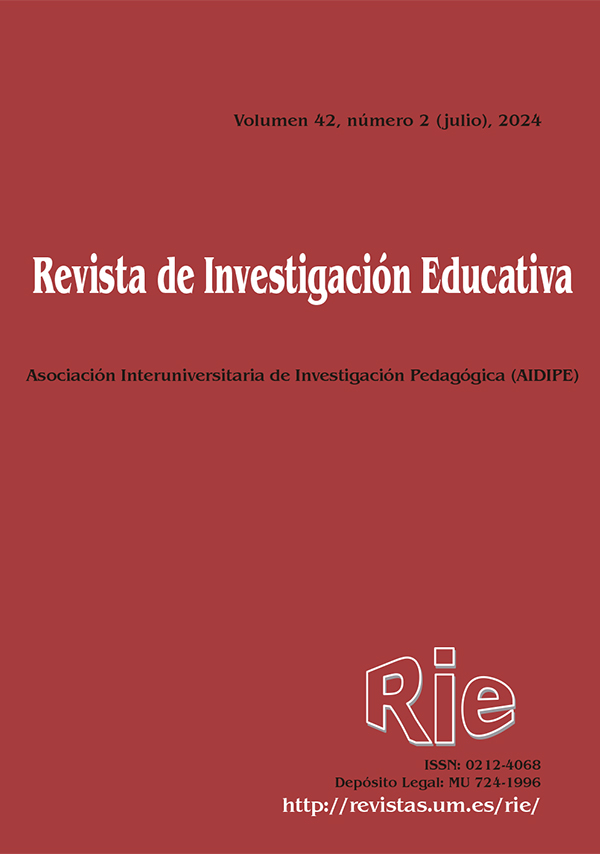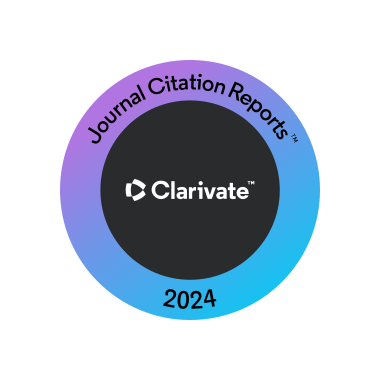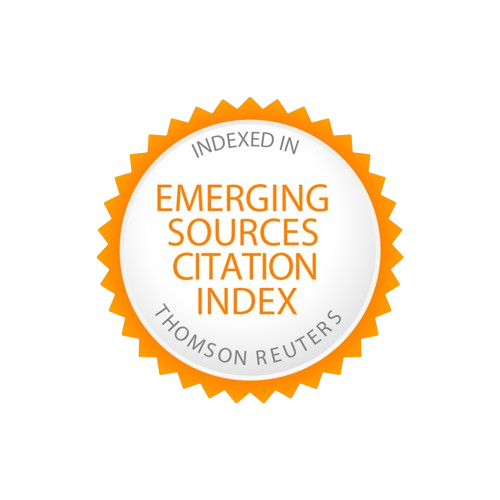ChatGPT
The Dilemma of the Authorship of Graded Assignments in Higher-Education
Abstract
The emergence of ChatGPT poses new challenges in the educational field. Among them, the open discussion on the potentially negative consequences that the program's use may generate in the learning and evaluation processes of students. The present study investigates the level of knowledge and perception of ChatGPT among university educators, as well as their proficiency in discerning student-authored texts from those generated by artificial intelligence. For this purpose, 51 professors at the University of Barcelona, specializing in communication and philology, were presented with a sample of texts extracted from an authentic academic assignment that included versions written by students themselves, together with outputs generated ad hoc by ChatGPT. The accuracy rate of the authorship assignment performed by teachers was 31%, a value that reveals a new obstacle in teaching, learning, and evaluation processes in higher education. Additionally, there was a tendency for ChatGPT-generated texts to be rated more favorably than those written by the students themselves. Finally, the article presents several suggestions aimed at anticipating the potential impact of the unethical use of artificial intelligence on the development of skills and abilities among university students.
Downloads
References
Agud, J. L. (2014). Fraude y plagio en la carrera y en la profesión. Revista Clínica Española, 214(7), 410–414. https://doi.org/10.1016/J.RCE.2014.03.007
Anderson, N., Belavy, D. L., Perle, S. M., Hendricks, S., Hespanhol, L., Verhagen, E., y Memon, A. R. (2023). AI did not write this manuscript, or did it? Can we trick the AI text detector into generated texts? The potential future of ChatGPT and AI in Sports & Exercise Medicine manuscript generation. BMJ Open Sp Ex Med, 9, 1568. https://doi.org/10.1136/bmjsem-2023-001568
Baidoo-Anu, D., y Owusu, L. (2023). Education in the Era of Generative Artificial Intelligence (AI): Understanding the Potential Benefits of ChatGPT in Promoting Teaching and Learning. SSRN. https://doi.org/10.2139/SSRN.4337484
Bharadiya, J. (2023). A Comprehensive Survey of Deep Learning Techniques Natural Language Processing. European Journal of Technology, 7(1), 58-66. https://doi.org/10.47672/ejt.1473
Bommarito, M. J., y Katz, D. M. (2022). GPT takes the Bar Exam. SSRN. http://dx.doi.org/10.2139/ssrn.4314839
Bujang, M. A., Omar, E. D., y Baharum, N. A. (2018). A Review on Sample Size Determination for Cronbach’s Alpha Test: A Simple Guide for Researchers. The Malaysian Journal of Medical Sciences : MJMS, 25(6), 85. https://doi.org/10.21315/MJMS2018.25.6.9
Butnaru, G. I., Haller, A. P., Dragolea, L. L., Anichiti, A., y Hârșan, G. D. T. (2021). Students’ Wellbeing during Transition from Onsite to Online Education: Are There Risks Arising from Social Isolation? International Journal of Environmental Research and Public Health, 18(18). https://doi.org/10.3390/IJERPH18189665
Carrasco, J. P., García, E., Sánchez, D. A., Porter, E., De La Puente, L., Navarro, J., y Cerame, A. (2023). ¿Es capaz “ChatGPT” de aprobar el examen MIR de 2022? Implicaciones de la inteligencia artificial en la educación médica en España. Revista Española de Educación Médica, 4(1). https://doi.org/10.6018/edumed.556511
Cervera, M. G., Martínez, J. G., y Mon, F. M. E. (2016). Competencia digital y competencia digital docente: una panorámica sobre el estado de la cuestión. RiiTE Revista Interuniversitaria de Investigación En Tecnología Educativa, 2529–9638. https://doi.org/10.6018/RIITE2016/257631
Chiche, A., y Yitagesu, B. (2022). Part of speech tagging: a systematic review of deep learning and machine learning approaches. Journal of Big Data, 9(1), 1-25. https://doi.org/10.1186/s40537-022-00561-y
Choi, J. H., Hickman, K. E., Monahan, A. B., y Schwarcz, D. (2023). ChatGPT goes to Law School. SSRN. https://dx.doi.org/10.2139/ssrn.4335905
Cuartero, M. D., Gutiérrez, I., Paz, M., Espinosa, P., y Clave, P. (2016). Análisis Conceptual de Modelos de Competencia Digital del Profesorado Universitario / Conceptual analysis of digital competence models of university teacher. Revista Latinoamericana de Tecnología Educativa - RELATEC, 15(1), 97–114. https://doi.org/10.17398/1695-288X.15.1.97
Díez-Martínez, E. (2015). Deshonestidad académica de alumnos y profesores. Su contribución en la desvinculación moral y corrupción social. Sinéctica, 44, 14. https://dialnet.unirioja.es/servlet/articulo?codigo=8239864&info=resumen&idioma=ENG
Domingo-Coscollola, M., Bosco, A., Segovia, S. C., y Valero, J. A. S. (2020). Fomentando la competencia digital docente en la universidad: Percepción de estudiantes y docentes. Revista de Investigación Educativa, 38(1), 167–182. https://doi.org/10.6018/RIE.340551
Doshi, R. H., Bajaj, S. S., y Krumholz, H. M. (2023). ChatGPT: Temptations of Progress. The American Journal of Bioethics. https://doi.org/10.1080/15265161.2023.2180110
Dowling, M., y Lucey, B. (2023). ChatGPT for (Finance) research: The Bananarama Conjecture. Finance Research Letters, 53, 103662. https://doi.org/10.1016/J.FRL.2023.103662
Else, H. (2023). Abstracts written by ChatGPT fool scientists. Nature, 613(7944), 423. https://doi.org/10.1038/D41586-023-00056-7
Escoda, A. P., y Conde, M. J. R. (2016). Evaluación de las competencias digitales autopercibidas del profesorado de Educación Primaria en Castilla y León (España). Revista de Investigación Educativa, 34(2), 399–415. https://doi.org/10.6018/RIE.34.2.215121
Gao, C. A., Howard, F. M., Markov, N. S., Dyer, E. C., Ramesh, S., Luo, Y., y Pearson, A. T. (2022). Comparing scientific abstracts generated by ChatGPT to original abstracts using an artificial intelligence output detector, plagiarism detector, and blinded human reviewers. BioRxiv, 2022.12.23.521610. https://doi.org/10.1101/2022.12.23.521610
García-Peñalvo, F. J. (2023). La percepción de la Inteligencia Artificial en contextos educativos tras el lanzamiento de ChatGPT: disrupción o pánico. Education in the Knowledge Society (EKS), 24, e31279. https://doi.org/10.14201/EKS.31279
Gómez, C., y Alende, S. (2022). Rutinas y tareas del profesorado universitario durante la covid-19, Estudio de caso de la facultad de ciencias sociales y comunicación de la Universidad de Vigo. Investigación: Cultura, Ciencia y Tecnología, 27, 36–48. https://dialnet.unirioja.es/servlet/articulo?codigo=8626674&info=resumen&idioma=SPA
Hall, R., Atkins, L., y Fraser, J. (2014). Defining a self-evaluation digital literacy framework for secondary educators: the DigiLit Leicester project. Research in Learning Technology, 22. https://doi.org/10.3402/RLT.V22.21440
Haque, M., Dharmadasa, I., Tasnim Sworna, Z., Namal Rajapakse, R., y Ahmad, H. (2022). “I think this is the most disruptive technology” Exploring Sentiments of ChatGPT Early Adopters using Twitter Data. Arxiv. https://doi.org/10.48550/arXiv.2212.05856
Heller, B., Heller, B., Proctor, M., Mah, D., Jewell, L., y Cheung, B. (2005). Freudbot: An Investigation of Chatbot Technology in Distance Education. EdMedia + Innovate Learning, 2005(1), 3913–3918. https://www.learntechlib.org/primary/p/20691/
Khalil, M., y Er, E. (2023). Will ChatGPT get you caught? Rethinking of Plagiarism Detection. Arxiv. https://doi.org/10.48550/arXiv.2302.04335
Kung, T. H., Cheatham, M., Medenilla, A., Sillos, C., De Leon, L., Elepaño, C., Madriaga, M., Aggabao, R., Diaz-Candido, G., Maningo, J., y Tseng, V. (2023). Performance of ChatGPT on USMLE: Potential for AI-assisted medical education using large language models. PLOS Digital Health, 2(2), e0000198. https://doi.org/10.1371/JOURNAL.PDIG.0000198
Ley Orgánica 3/2018, de 5 de diciembre, de Protección de Datos Personales y garantía de los derechos digitales. Boletín Oficial del Estado, 294, de 6 de diciembre de 2018. https://www.boe.es/buscar/act.php?id=BOE-A-2018-16673
Locke, S., Bashall, A., Al-Adely, S., Moore, J., Wilson, A., y Kitchen, G. B. (2021). Natural language processing in medicine: A review. Trends in Anaesthesia and Critical Care, 38, 4–9. https://doi.org/10.1016/J.TACC.2021.02.007
Luo, B., Lau, R. Y. K., Li, C., y Si, Y. W. (2022). A critical review of state-of-the-art chatbot designs and applications. Wiley Interdisciplinary Reviews: Data Mining and Knowledge Discovery, 12(1), 1–26. https://doi.org/10.1002/WIDM.1434
Manning, C., y Schutze, H. (1999). Foundations of Statistical Natural Language Processing. MIT Press. http://nlp.stanford.edu/fsnlp/
Pérez, J. Q., Daradoumis, T., y Puig, J. M. M. (2020). Rediscovering the use of chatbots in education: A systematic literature review. Computer Applications in Engineering Education, 28(6), 1549–1565. https://doi.org/10.1002/CAE.22326
Reglamento (UE) 2016/679 del Parlamento Europeo y del Consejo, de 27 de abril, relativo a la protección de las personas físicas en lo que respecta al tratamiento de sus datos personales y a la libre circulación de estos datos y por el que se deroga la Directiva 95/46/CE (Reglamento general de protección de datos). Diario Oficial de la Unión Europea, L119, de 4 de mayo de 2016. https://eur-lex.europa.eu/legal-content/es/ALL/?uri=CELEX%3A32016R0679
Rudolph, J., Tan, S., y Tan, S. (2023). ChatGPT: Bullshit spewer or the end of traditional assessments in higher education? Journal of Applied Learning and Teaching, 6(1). https://doi.org/10.37074/JALT.2023.6.1.9
Sáiz-Manzanares, M.C., Casanova, J.R., Lencastre, J.A., Almeida, L., y Martín-Antón, L.J. (2022). Satisfacción de los estudiantes con la docencia online en tiempos de COVID-19. Comunicar, 30(70). https://doi.org/10.3916/C70-2022-03
Sancho-Gil, J. M., Sánchez-Valero, J. A., y Domingo-Coscollola, M. (2017). Research-based insights on initial teacher education in Spain. European Journal of Teacher Education, 40(3), 310–325. https://doi.org/10.1080/02619768.2017.1320388
Sharp, J., y Theiler, S. (2018). A Review of Psychological Distress Among University Students: Pervasiveness, Implications and Potential Points of Intervention. International Journal for the Advancement of Counselling, 40(3), 193–212. https://doi.org/10.1007/s10447-018-9321-7
Tallyn, E., Fried, H., Gianni, R., Isard, A., y Speed, C. (2018). The ethnobot: Gathering ethnographies in the age of IoT. Conference on Human Factors in Computing Systems - Proceedings, 604, 1-13. https://doi.org/10.1145/3173574.3174178
Villegas-Ch, W., Arias-Navarrete, A., y Palacios-Pacheco, X. (2020). Proposal of an Architecture for the Integration of a Chatbot with Artificial Intelligence in a Smart Campus for the Improvement of Learning. Sustainability, 12(4), 1500. https://doi.org/10.3390/SU12041500
Zhu, Q., y Luo, J. (2022). Generative Pre-Trained Transformer for Design Concept Generation: An Exploration. Proceedings of the Design Society, 2, 1825-1834. https://doi.org/10.1017/pds.2022.185
Copyright (c) 2024 Journal of Educational Research

This work is licensed under a Creative Commons Attribution-NonCommercial-NoDerivatives 4.0 International License.
The articles and scientific documents published in RIE abide the following conditions:
1. The Servicio de Publicaciones de la Universidad de Murcia (the publisher) has the property rights (copyright) of all the documents published and allows the reuse under the user’s license indicated in point 2.
2. All documents are published in the digital edition of RIE under a Creative Commons Reconocimiento-NoComercial-SinObraDerivada 3.0 España (legal document) license. These documents can be copied, used, distributed, communicated and explained publicly if: i) the author(s) and its original source of publishing (magazine, publisher and URL of the document) are cited; ii) it is not used for commercial purpose; iii) the existence and the specifications about this license are mentioned.
3. Auto-archive’s conditions. The authors are allowed and encouraged to digitally distribute the pre-print versions (a version before evaluation) and/or post-print (a version that it is already evaluated and accepted to its publication). This promotes circulation and distribution earlier and can increase the citations and significance within the academic community.










